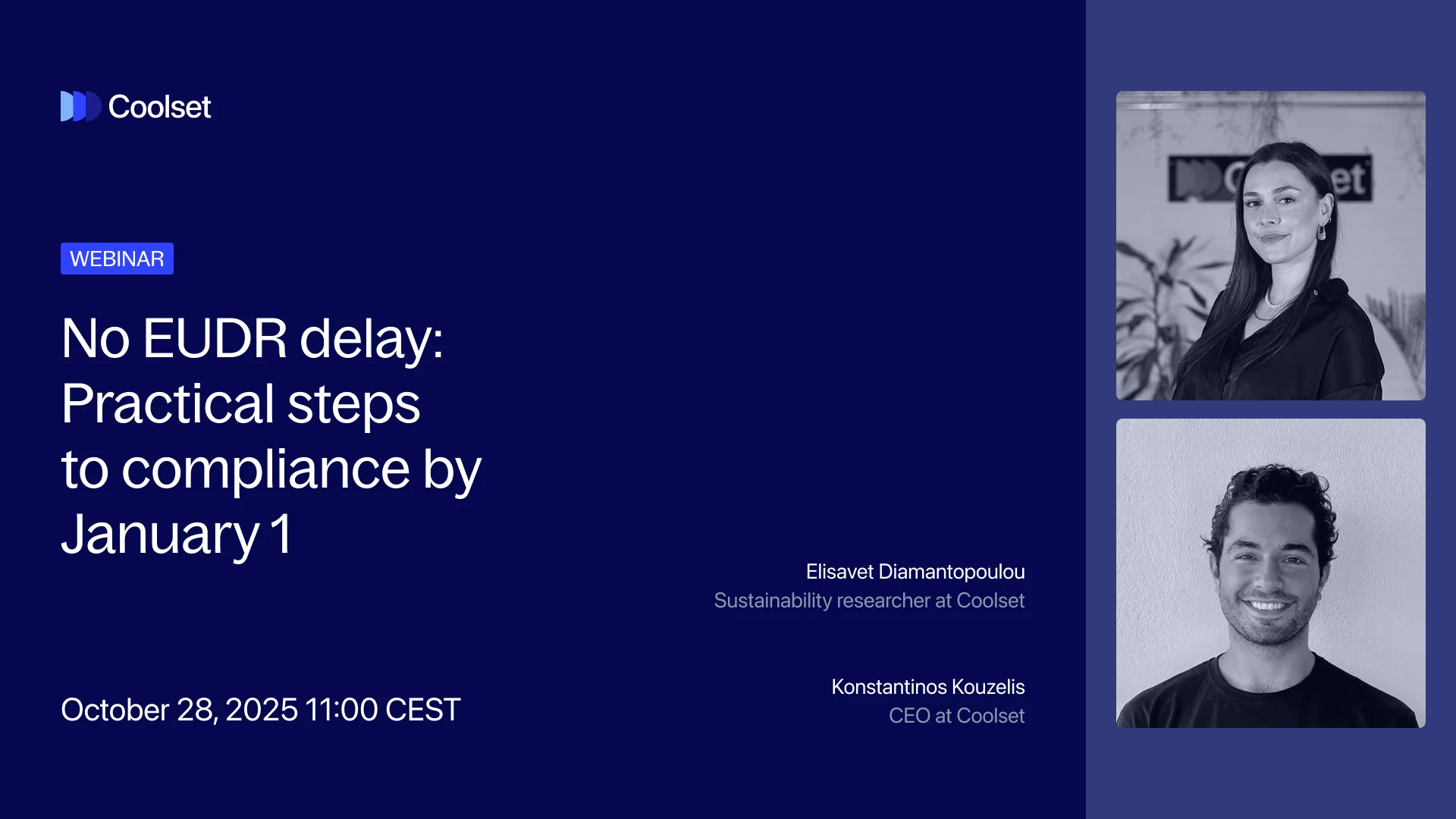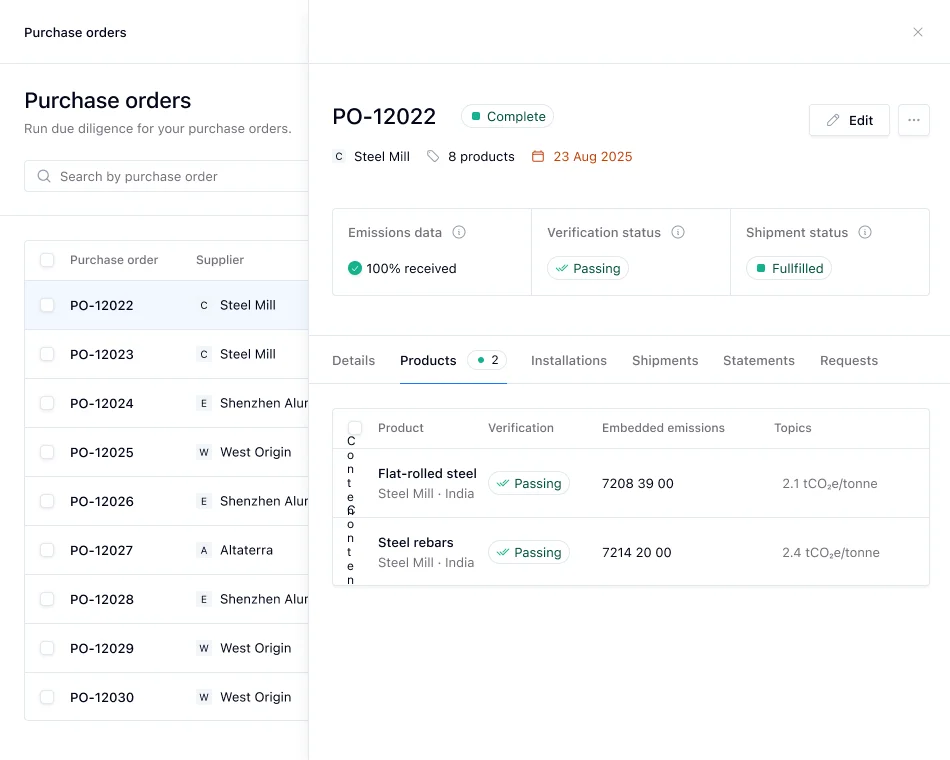
Disclaimer - EUDR updates as of 23rd September 2025
On July 9, the European Parliament rejected the EUDR country risk benchmarking system. More recently on September 23, the European Commission also proposed delaying the regulation’s implementation. We are monitoring these developments and will update content as needed. For the most up-to-date information, refer to this deep-dive article.
Disclaimer: Latest EUDR developments
On 21 October, the European Commission proposed changes to the EU Deforestation Regulation (EUDR). Here are the key proposals:
Read the full explainer here. In-scope companies should now accelerate supplier mapping, traceability, and due diligence documentation to stay on track. Keep up to date with the latest developments here.
Latest update: October 22, 13:30 CET
The European Commission has officially proposed a set of targeted measures to make the rollout of the EU Deforestation Regulation (EUDR) smoother and more manageable. The main compliance date for large and medium-sized companies stays at 30 December 2025, with inspections and enforcement starting in mid-2026.
The proposal introduces a one-year extension and lighter reporting requirements for small and micro producers (such as farmers and foresters) in low-risk countries. It also removes duplicate due diligence submissions for downstream actors like manufacturers and retailers, who will still need to stay registered in the EUDR system and pass on supplier traceability data.
These adjustments aim to ease administrative pressure and stabilize the EU’s IT system without changing the regulation’s core goal - ensuring full visibility and deforestation-free supply chains. The proposal will now be reviewed by the European Parliament and the Council before becoming law, so some details may still change.
Large and medium operators placing commodities such as soy, palm oil, cocoa, beef, timber and rubber on the EU market must still comply with the EU Deforestation Regulation (EUDR) by 30 December 2025. Inspections and enforcement checks will begin from 30 June 2026.
A new category, “micro and small primary operators” (such as farmers and foresters in low-risk countries), will benefit from an extended compliance deadline of 30 December 2026. They will no longer need to submit full due-diligence statements (DDS); instead they’ll submit a one-off declaration or provide relevant data via national or recognised databases, generating a “declaration-ID” that can be used throughout the supply chain.
Manufacturers, retailers and other downstream actors no longer need to submit their own DDS provided the upstream importer already has. However, they must register in the EUDR information system and ensure traceability by collecting and transmitting due-diligence reference numbers or declaration identifiers.
The adjustments reflect the Commission’s aim to ease pressure on the EUDR IT system and cut red-tape while maintaining full traceability. The proposal is now under review by the European Parliament and Council, and final regulatory language is expected imminently.
These updates give companies clearer direction but do not signal a broad delay or weakening of accountability. Compliance planning should continue with focus and urgency.
For large and medium-sized companies, the message is clear: EUDR compliance work must continue on the 2025 timeline. Systems for supplier mapping, traceability, and due diligence documentation need to be ready before year-end 2025, as inspections will begin mid-2026.
The proposal mainly changes how reporting happens across the supply chain:
In short, the Commission’s proposal adds clarity and simplification but no extra time for most companies. Those who act now to structure data, engage suppliers, and automate traceability will be best positioned to handle inspections and avoid disruption in 2026.
{{custom-cta}}
The Commission’s proposal will now move to the European Parliament and the Council for review and adoption. Both institutions are expected to discuss and vote on the amendments before the end of 2025.
If adopted, the regulation will officially apply from:
Until the vote is finalized, companies should continue preparing under the assumption that the current timelines will stand.
Coolset’s research team will continue tracking the developments closely and will share detailed updates and practical guidance after the legislative vote.
Learn what the latest update means in practice and how to prepare in time

Accelerate your compliance process and get EUDR-ready in weeks.
